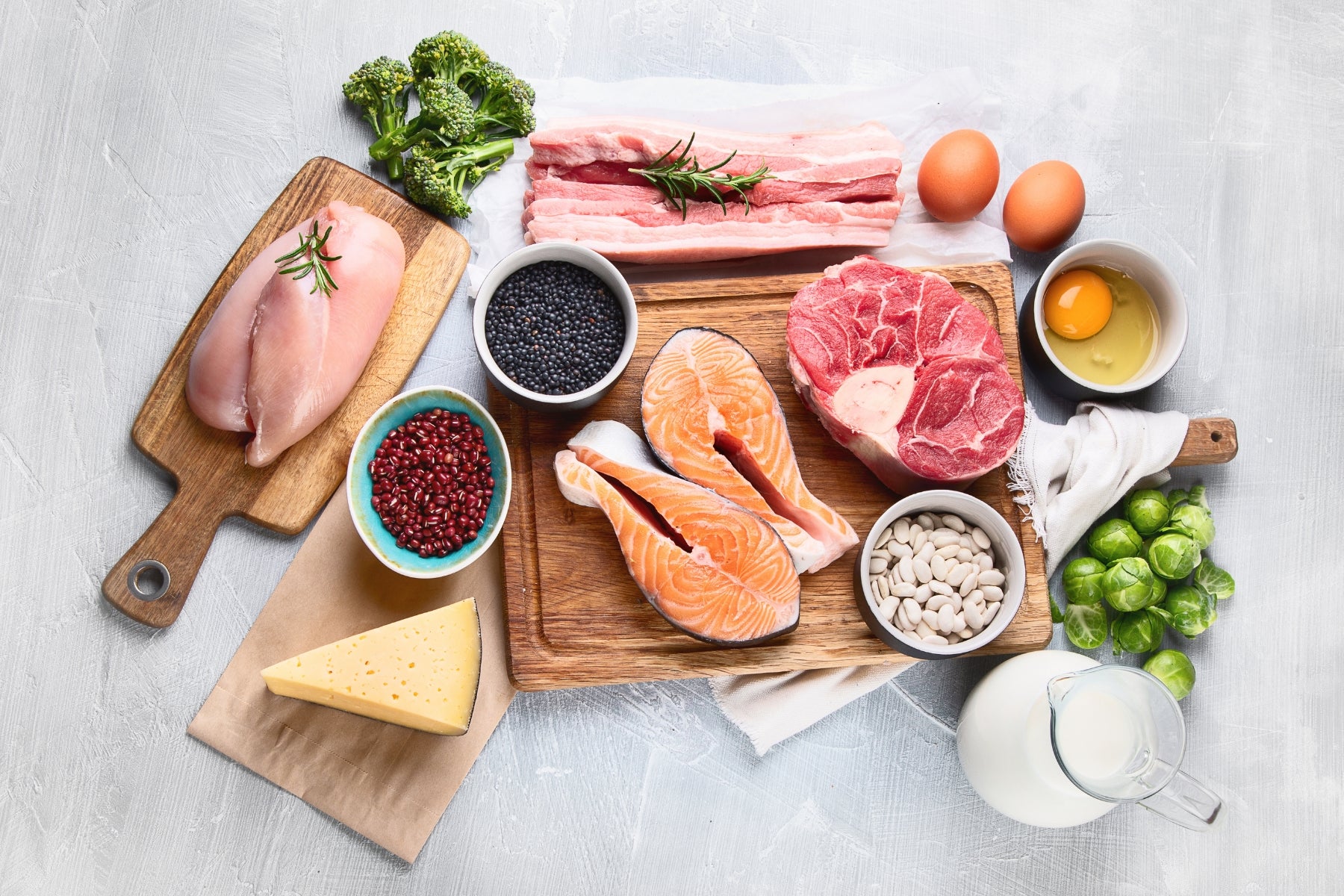What is the keto diet?
Definition of the keto diet
The keto diet, also known as a ketogenic diet, is a low -carbohydrate and high -fat diet. The goal of the Keto Diet is to put the body into a metabolic state called ketosis by using fat as the main energy source instead of carbohydrates.
How the keto diet works
With the keto diet, the carbohydrate intake is greatly reduced, usually to less than 50 grams per day. At the same time, fat consumption is increased. This forces the body to use fat as an energy source. In the liver, the fat is converted into so -called ketone bodies, which are then used as energy by the body and brain.
Advantages of Keto Diet
The Keto Diet can have some health benefits. Studies have shown that they help to stabilize blood sugar levels and reduce the risk of certain diseases such as type 2 diabetes, heart diseases and some types of cancer. In addition, many people report more energy and improved mental clarity.
Food in the keto diet
Recommended foods
With the Keto diet, food with high fat and low carbohydrate content should mainly be consumed. This includes:
- Fat meat like beef, pork, lamb and wild poultry
- Fetting fish such as salmon, tuna and mackerel
- Egg
- Cheese, butter and cream
- Healthy oils such as olive oil, coconut oil and avocado oil
- Avocados
- Nuts and seeds
- Carbohydrate vegetables such as leafy vegetables, tomatoes, onions and peppers
Foods that should be avoided
With the Keto diet, carbohydrate -rich foods should be severely restricted or completely avoided. This includes:
- Sugar and confectionery
- Cereals and grain products such as bread, pasta, rice and muesli
- Fruit (with the exception of berries in small quantities)
- Legumes such as beans, lentils and peas
- Root and tuber vegetables such as potatoes, sweet potatoes and carrots
- alcohol
- Suitable drinks
Example nutrition plan for the Keto Diet
A typical daily schedule for the keto diet could look like this:
- Breakfast: scrambled eggs with spinach and avocado
- Lunch: salmon with butter sauce and broccoli
- Snack: a handful of nuts
- Dinner: Steak with salad and olive oil dressing
How do you start with the keto diet?
Preparation
Before you start with the Keto diet, it is important to prepare well. This includes:
- Find out more about the diet
- Talk to your doctor to ensure that the diet is suitable for you
- Plan your meals in advance
- Dispose of all non-keto-friendly foods
- Get keto-friendly food
Adaptation to the Keto Diet
In the first few days and weeks of Keto Diet, adjustment difficulties can occur, often referred to as "keto flu". Symptoms can be fatigue, headache, constipation and muscle cramps. These symptoms usually disappear after a few days as soon as the body has got used to ketosis.
Long -term implementation
The Keto Diet is not a diet that you only do for a few weeks. In order to enjoy the advantages in the long term, it should be seen as a permanent change in diet. It is important to stick to the nutrition plan, to drink enough, to make it regularly exercise and to listen to your own body.
Possible risks and side effects
Lack of nutrients
Since many food groups are restricted in the keto diet, there is a risk of nutrient deficiency. It is important to pay attention to a sufficient supply of fiber, vitamins and minerals. Dietary supplements can help close possible gaps.
Increased cholesterol
In some people, the high-fat diet can lead to an increase in LDL cholesterol, which can increase the risk of heart disease. Regular blood tests and the choice of healthy fat sources are important.
Digestive problems
The sudden switch to a very high -fat and low -fiber diet can lead to constipation. Sufficient drinking and taking fiber can help.
Who is the keto diet suitable for?
Overweight and obese
The keto diet can be very effective when losing weight, especially for people with heavy overweight or obesity. The lowering of the insulin level and the appetizer -free effect of ketosis can help to reduce calorie intake and burn fat.
People with type 2 diabetes
Studies have shown that the Keto diet can improve blood sugar levels and insulin resistance, which can be particularly advantageous for people with type 2 diabetes. However, the diet should only be carried out under medical supervision.
sportsman
Some athletes use the Keto Diet to improve their performance, especially in endurance sports. Adaptation to fat burning can improve endurance performance and reduce the dependence on carbohydrates during sport.
Conclusion
The keto diet is a low -carbohydrate and high -fat diet that causes the body to use fat as the main energy source. It can help you lose weight, improve blood sugar levels and reduce the risk of certain diseases. However, it also harbors risks such as lack of nutrients and digestive problems. The Keto Diet is not suitable for everyone and should only be started after consultation with a doctor. With the correct planning and implementation, however, the Keto Diet can be an effective tool for a healthier diet and a healthier lifestyle.



